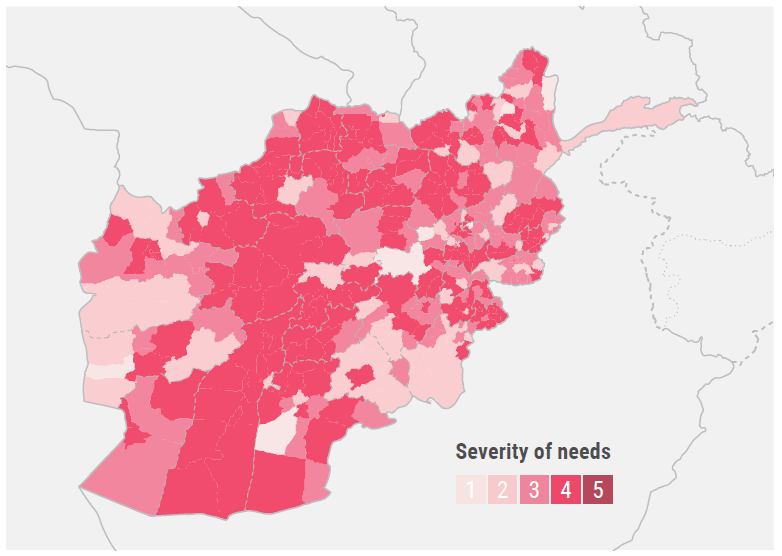
Sectoral severity of needs
by district (in 2024)

Sectoral people in need and people targeted
by province (in 2024)
Cluster objective CO1
Vulnerable families and girls and boys at-risk have access to well-coordinated age, gender and disability sensitive child protection services, including psychosocial support and case management, and are protected against life threatening risk including abuse, neglect, violence and exploitation
Contributes to Specific Objective SP 2.1
Cluster objective CO2
Girls and boys are protected through coherent and meaningful engagement with communities, caregivers and duty bearers by promoting evidence based awareness raising and advocacy and use of community based child protection mechanisms
Contributes to Specific Objective SP 2.1
Cluster objective CO3
Increased and strengthened capacities of partners, service providers, civil society, and authorities, including through established guidelines and SOP, training, and resources to safely prevent, mitigate, mainstream, and respond to protection issues
Contributes to Specific Objective SP 2.1
Response Strategy
The child protection area of responsibility (CP AoR) will utilise integrated and community-based approaches to respond to children across all vulnerable populations in need of care and protection. CP partners will provide comprehensive case management services, establish child-friendly safe spaces to provide a secure setting for educational and recreational activities, engage parents and caregivers to cope with psychological stressors and enhance positive parenting, distribute emergency response and NFI kits, provide cash-for-protection, and raise awareness of child protection issues through community dialogues and mass media. The CP AoR will also build the capacity of partners and the social workforce on minimum quality standards for services and multi-sectoral integration, strengthen coordination at national and sub-national levels, and roll out the child protection information management systems (CPIMS+) to enhance the management and organization of child protection data.
Targeting and Prioritization
The CP AoR targeting strategy will prioritize activities based on geography, vulnerability, emergency response and seasonal needs, and community engagement. Priority will be given to rural areas with the most severe child protection needs, considering factors such as lack of social services and prevalence of child exploitation, violence, and displacement. Vulnerable groups, including unaccompanied and separated children, girls, children with disabilities, women-headed households, and those living in high-risk environments, will be a primary target. CP partners will prioritize areas and communities affected by extreme weather conditions, and actively engage affected communities to participate in the identification of protection needs. The CP AoR will adjust its strategy based on funding received to ensure critical activities are implemented to the greatest extent possible. If only 50 per cent of funding is received, CP will halve its target for case management and structured psychosocial assistance (PSS) activities, reduce parenting sessions to 30 per cent and capacity-building activities for humanitarian workers to 15 per cent. If only 25 per cent of required funds are received, structured PSS activities, prevention messaging, and the rollout of CPIMS+ will also be affected, prevention messaging, and the rollout of CPIMS+ will also be affected.
Quality and Inclusive Programming
The CP AoR will ensure the inclusion of women and girls, people with disabilities, and other vulnerable groups through the design of safe, physically accessible spaces to specifically accommodate the needs of women, girls, and boys; gender-sensitive child protection awareness campaigns; specialized case management support to children with disabilities, and women’s and girls’ empowerment activities, providing them with opportunities to build resilience and access resources to protect themselves. The AoR will also address specific needs of children on the move, unaccompanied and separated children, women-headed households, and children recently returned to Afghanistan.
Cost of Response
The Child Protection AoR will require $43 million to provide essential support to 4.6 million people. The response cost utilises an average cost of $9 per person as analysed based on the 2023 programming data. Primary cost drivers for cluster activities are establishing child friendly spaces and case management services, as well as wellbeing messaging to support children’s psychosocial wellbeing These activities are conducted at in-person child and adolescent friendly spaces, as well as homes and communities, which have proven essential and lifesaving, particularly for girls and boys.


